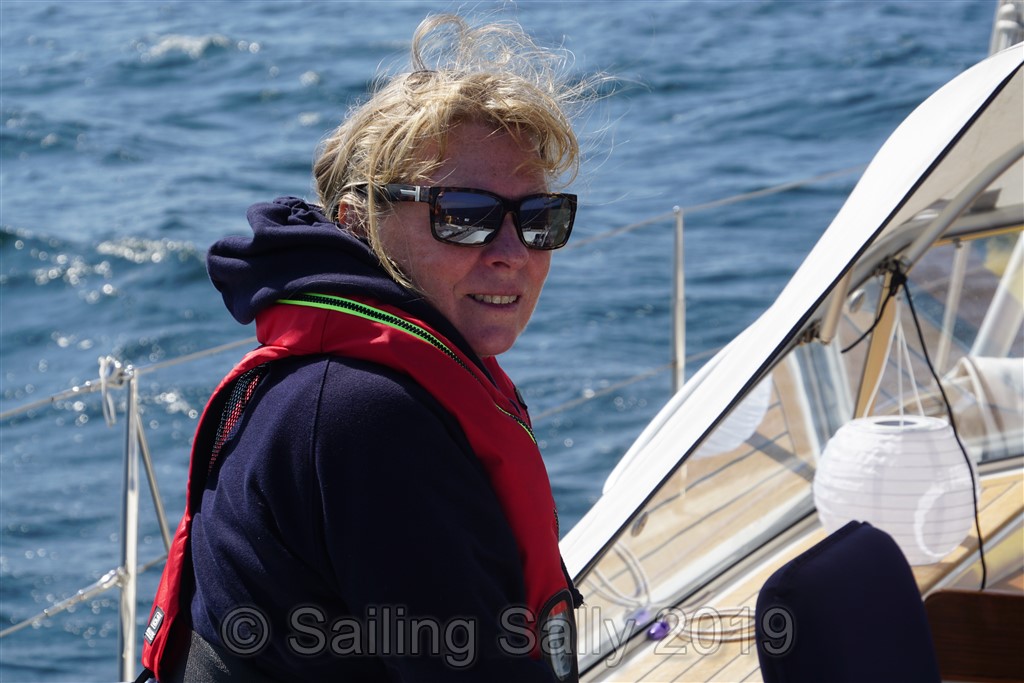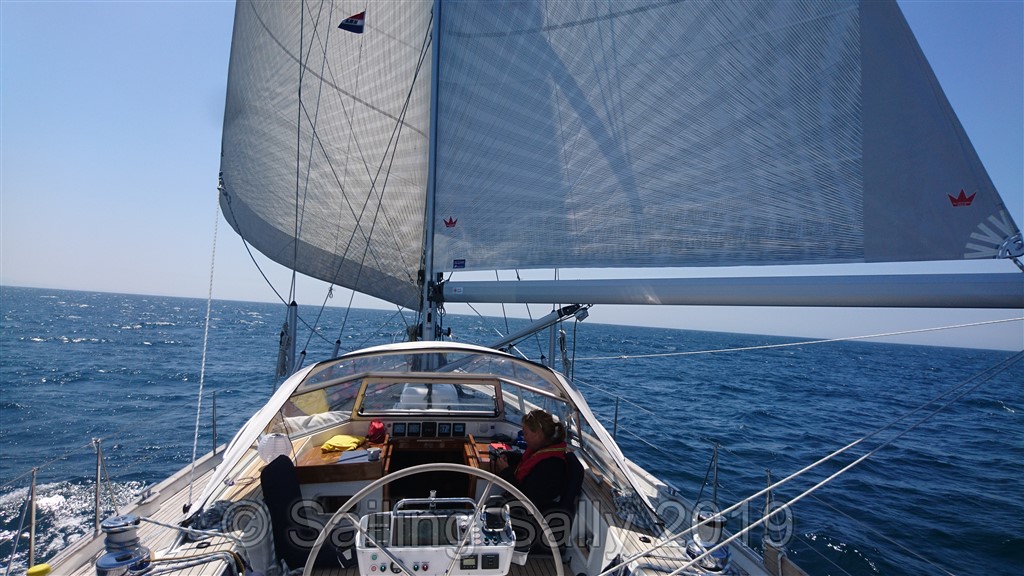Casts off again and rounds Faro de Finisterre, Spain’s westernmost point. The Romans believed that this was the westernmost point of the earth and that the world ended here. Hence the name, ”finis terrae” which means ”the end of the earth” in Latin. We had intended to round the cape and lay in the bay inside, but the sailing was so lovely that we decided to continue a little further.
Now it is south for us. First past the deep bays of Spanish Galicia, where we intend to stay for a while, and then down the Portuguese coast towards Porto and Lisbon.
This evening, we sail into Ria de Muros and lay on anchor at San Francisco bay. It’s actually called that.

In the evening we think dinner ashore would be nice, which is always convenient when we have been sailing all day, and there is a nice restaurant in the bay. We dress up a bit and take the dinghy.
The first thing that happens is that the swell, which is no longer noticeable, breaks 2 m from the beach and rolls over the sand. I lift the dress up and jump in the breaking waves anyway and Jonas comes along. We pull up the boat a few meters on the beach and think about how to do it now. If we leave the boat where it is, the tide, which is on the way up, will soon grab the boat, and possibly turn it upside down with the breaking waves. Jonas rows out a bit and hurls the anchor to get the boat into the water. But since we are ”finely dressed” he can’t make it very far out, he must be able to go ashore with his shorts, and the boat then ends up in the middle of where the waves are breaking. Not good, and besides, the mooring line is not long enough for the only stones that are 30 m up on the beach. Can we pull the boat so far up the beach that it is free from the tide?
Unfortunately, it’s too heavy with the engine on and the beach wheels just dig down in the sand. Now we are really wet by standing and holding a dinghy in the breaking waves and giving up on this.
We make another attempt at the only ramp in the bay, no harbor. But may even give up here too, when the risk is too great that the dinghy will scrape against syllable mussel shells on the ramp when the tide comes. Unfortunately no pictures, we had our hands full 🙂
Instead, we improvised dinner on board at 22, very hungry by then. And finally, we got a pretty nice evening in the light of the lamp.
We googled the problem to see how other cruisers do when they land on a beach with breaking water and tides. It will be a bit different depending on whether the water is on the way up or down, but the basic rule was to be prepared to swim and a person to swim from the dinghy to the beach. Dress-up clothes are included in the waterproof bag and change ashore. Next time we will be more prepared, and good that we tested this in calm weather and small swell:)
BOOM BANG
Must also tell about the outhaul to the mainsail that snapped off. Jonas has written about it in another blog post where you can read more about the event.
Fortunately, there was almost no wind and we were motoring. We had the mainsail out just to counter the swings of the swell that rolled in from the sea. Suddenly there was a loud bang, the rope pulling out the sail along the boom had gone off and the sail fluttered freely away. Because it was so calm it was possible to roll it into the mast without any problems.
What had happened?
The rope that went off is made up of three layers. The innermost for strength so the rope does not go off, (bottom of the picture) then an inner and an outer as protection for wear from the outside. A rope is always lying and scratching at something.
For some unfathomable reason, the supplier has removed the two protective layers and made a loop of only the innermost (core) of the rope, and in addition, the loop sat at the wrong end (according to us) on the shackle. The rope should go around the round part where it was worn less. Now it went around the other part where it was worn off against the small bumps found there. So little is needed, especially when the tougher protective layers are gone.
Now Jonas has made a new better loop and turned the shackle.
The reason they chose to turn the shackle in the ”wrong direction” in our opinion is that the small end you take in to tighten the crossbeam will scratch the boom. Not good either, but there are shackles where the little handle is folded in, so one should be bought as soon as we get to a boat shop.

The broken outhaul 
The repaired outhaul






Du måste vara inloggad för att kunna skicka en kommentar.